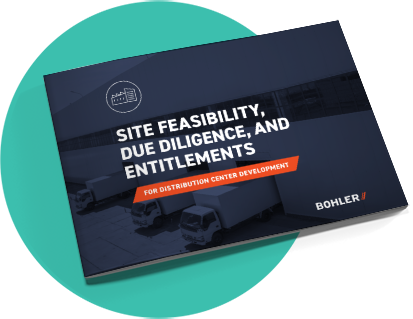Stay in the Know
Get our insights and latest news straight to your inbox.
The industrial market forecast for central Pennsylvania is stronger than ever due to low vacancy rates, high rents, and record net absorption gains surpassing 35 million SF [source].
Additionally, central Pennsylvania’s robust highway network connects the region to many major metropolitan areas, making Harrisburg a prime location for warehousing, distribution, and manufacturing. A delivery truck can be in Baltimore in an hour and a half, Washington, D.C. in two and a half hours, Philadelphia in two hours, or New York City in three hours.
For developers and end users seeking to expand operations, here are three ways to leverage the opportunities and overcome the challenges you’ll find in Harrisburg.

Obvious sites in the right location are difficult to come by, if they exist at all. As a result, developers need to use different evaluation criteria than they have in the past. Thinking unconventionally about lot consolidations and subdivisions, using existing conditions – even wetlands – to your advantage, and being flexible with your prototype and layout preferences will help you move forward much faster.
If you’re struggling to find the right acreage, look at the property immediately adjacent to the available lot, whether developed or not. With the backing of a good broker and a site civil engineer who can quickly turn around yield analyses, due diligence, and subdivision services, you may find a creative solution for securing the acreage you need.
While site constraints might require building or layout modifications, a creative design may be the solution to developing in a way that accomplishes your project goals.
In short, flexibility is key to making a Harrisburg site work for you. All it takes is ingenuity and thoughtful execution to transform a “difficult” site into a developable one.
Take a closer look at those site design factors that will have the greatest impact on budget and schedule. Understanding these drivers and managing them well will help you act on opportunities, as well as create realistic work scopes, cost projections, and timelines.
For large sites, earthwork is one of the costliest elements of a project and can be the most significant variable or risk to return on investment. Have your design team develop a conceptual grading plan and perform a cut/fill analysis early in the process. Engaging your team during the initial project stages will give you more opportunities to manage earthwork and develop cost-saving solutions.
Many agencies are trending toward a more sustainable and environmentally friendly approach to stormwater management. In particular, treating stormwater in multiple areas throughout the site rather than in one large basin. Lean into your site engineer’s knowledge of local stormwater management regulations so you can more accurately anticipate the scope of work that will be required. Also, engaging your design team early will help you understand any future regulation changes that might apply to your project.
Proximity to major thoroughfares and ease of access to and from highway networks is one of the leading considerations for tenants when evaluating warehouse and fulfillment space. Meet with the municipality and the agency with jurisdiction over the road to discuss your development plans and to determine how much off-site work they expect. Engaging a traffic engineer to perform due diligence and traffic counts early on will further help you budget for off-site work.
Many design details are heavily driven by tenants’ operational needs. Factors such as building height, daily truck trips, employee counts, utility capacity demands, and loading dock heights vary greatly and ultimately impact project scope and a developer’s ability to occupy the space. To better manage the project’s scope and improve your chances of securing a tenant quickly, be intentional when selecting the type of building to develop and the type of tenant you want to attract.
Today’s real estate development market is facing increasingly long entitlements timelines and permitting challenges that can easily interrupt or sideline your projects. Focus on minimizing delays during permitting and entitlements by engaging your design team even ahead of due diligence. This will allow them to help you develop a systematic approach to the research process. Design teams can assist developers in allocating the budget, establishing realistic timelines, and identifying important due diligence milestones – all key factors that can impact your deal structure.
Whenever possible, ensure your design team is submitting documents to the applicable review agencies and municipalities concurrently. Parallel processing reviews can shorten the permitting timeline.
It’s also critical to understand local factors at play and how they might influence your project’s chance of success. Meet with stakeholders, ask for feedback, and discuss project considerations either in person or virtually. This approach can eliminate rounds of review comments which, in turn, shaves a couple of months off the timeline.
Central Pennsylvania is ripe with opportunities for industrial development, and the boom shows no signs of slowing down. As always, the key to success is a deep understanding of the market, knowledge of the players and regulatory landscape, and bringing innovative thinking and approaches to the table.
Get our insights and latest news straight to your inbox.